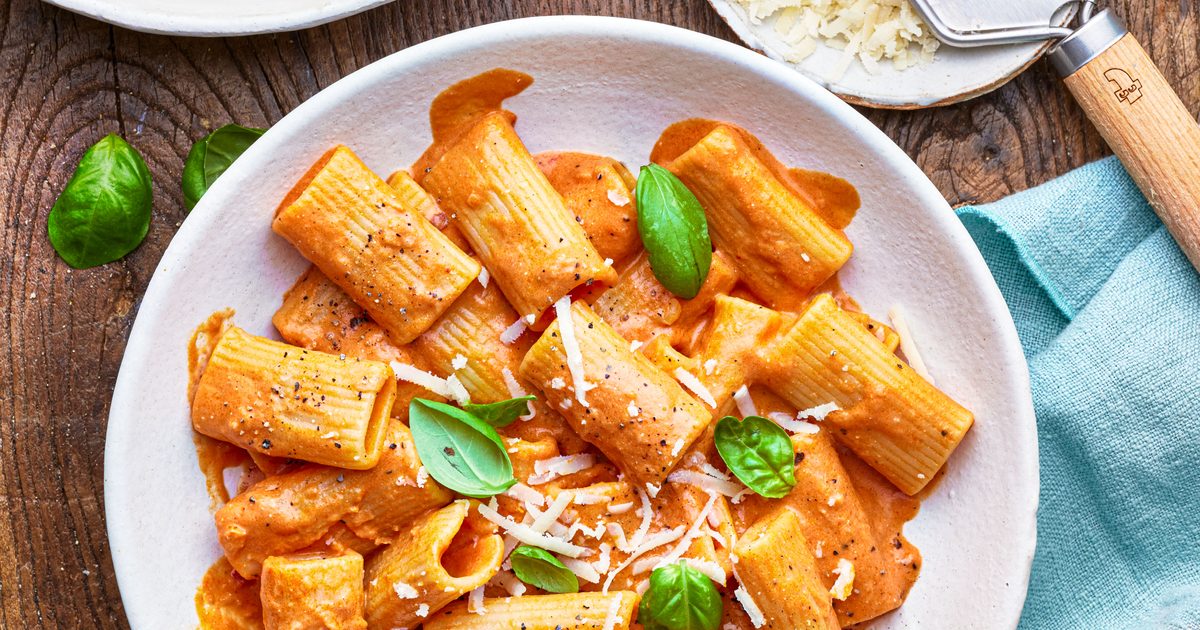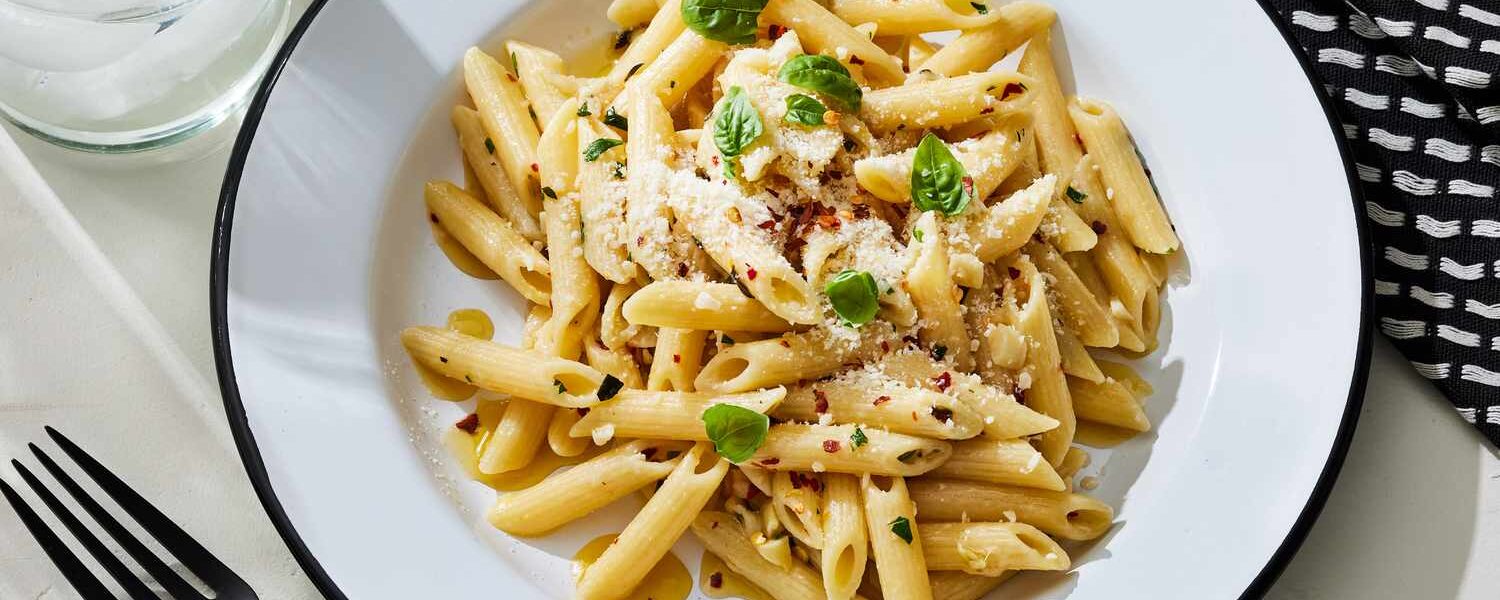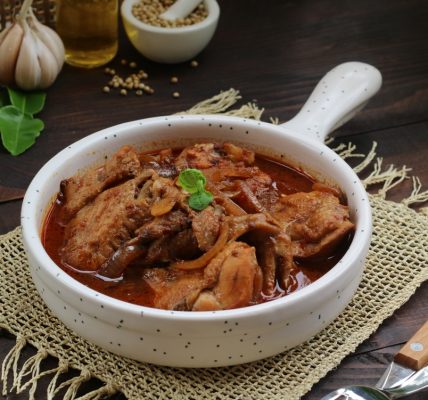In the colorful tapestry of Italian cuisine, one ingredient stands out as the heartthrob of every dish – pasta. From the seductively twirled spaghetti to the comforting embrace of penne, pasta weaves a story of tradition, flavor, and endless culinary possibilities. It’s not just a meal; it’s a celebration of Italy’s rich gastronomic heritage and the epitome of comfort food worldwide.
With each al dente bite, pasta transports you to the sun-kissed streets of Rome or the bustling markets of Naples. Every twirl of pasta captures the essence of la dolce vita, the sweet life that Italians hold dear. Whether it’s a simple aglio e olio or a decadent pasta carbonara, this humble staple has a way of turning a mundane meal into a feast fit for royalty.
Join us on a journey through the winding streets of Italy as we unravel the magic of pasta, from its humble beginnings to its rightful place on the global culinary stage.
The History of Pasta in Italian Cuisine
Contents
- 1 The History of Pasta in Italian Cuisine
- 2 Types of Pasta Shapes and Their Origins
- 3 Traditional Pasta Dishes from Different Regions of Italy
- 4 The Art of Making Homemade Pasta
- 5 Pasta Sauces: A Guide to Classic Italian Recipes
- 6 Health Benefits of Italian Staple as Part of a Balanced Diet
- 7 Pasta and Wine Pairing Recommendations
- 8 Pasta in Popular Culture and Its Global Impact
- 9 Sustainable Italian Staple Production and Eco-Friendly Practices
- 10 Embracing the Italian Staple Culture: Tips for Enjoying and Cooking Italian Staple at Home
- 11 Author
The origins of pasta can be traced back to ancient civilizations, with its roots nestled deep within the annals of history. While many cultures claim to have created the first pasta, it is the Italians who have refined it into an art form. The earliest references to pasta date back to the 4th century BC, with Greek philosopher Pythagoras mentioning a dish made from wheat flour and water. However, it wasn’t until the 13th century that pasta began to gain popularity in Italy.
By the 14th century, pasta-making techniques had spread throughout the Italian peninsula, and various regions began to develop their unique styles. The introduction of durum wheat, particularly in the southern regions, led to the creation of dried pasta, which became a staple for those seeking sustenance during long journeys. The invention of the pasta machine in the 19th century further revolutionized the craft, making pasta more accessible to the masses.
Throughout the centuries, pasta has evolved into a symbol of Italian culture. It is not merely a dish; it represents family gatherings, celebrations, and the latoto essence of community. As pasta found its way into households around the world, it carried with it the stories and traditions of Italy, becoming a beloved food that transcends borders and brings people together.

Types of Pasta Shapes and Their Origins
The sheer variety of pasta shapes is nothing short of astounding, with each form serving a distinct purpose in the culinary world. From long strands to short tubes, the shapes of pasta are often influenced by the region in which they originated. For example, the iconic spaghetti hails from Naples and is traditionally paired with light sauces, while the hearty rigatoni from Lazio is perfect for capturing rich, meaty sauces.
One of the most fascinating aspects of Italian Staple is its regional diversity. In the northern regions of Italy, such as Emilia-Romagna, you’ll find stuffed Italian Staple varieties like tortellini and ravioli, often filled with cheeses, meats, or vegetables. In contrast, southern Italy showcases shapes like orecchiette and cavatappi, which are often used in dishes featuring robust flavors and fresh ingredients. Each shape has a story, reflecting the local ingredients, traditions, and culinary practices of the area.
Moreover, the cultural significance of Italian Staple shapes extends beyond the kitchen. Certain shapes are associated with specific holidays and festivities, such as lasagna during Christmas or fettuccine on special occasions. This connection to tradition makes Italian Staple not only a versatile ingredient but also a cherished symbol of Italian heritage, passed down through generations.
Traditional Pasta Dishes from Different Regions of Italy
To truly appreciate the richness of Italian Italian Staple, one must explore the traditional dishes that hail from various regions. Each dish offers a glimpse into the local customs, ingredients, and culinary influences that shape Italian cuisine. In the region of Campania, for instance, classic dishes like spaghetti alle vongole (spaghetti with clams) showcase the abundance of fresh seafood available along the Amalfi Coast. This dish embodies the simplicity and elegance of Italian cooking, relying on just a few high-quality ingredients to create a symphony of flavors.
Moving north to the region of Emilia-Romagna, we encounter the beloved tagliatelle al ragù, often referred to as “bolognese.” This rich meat sauce is slow-cooked to perfection, allowing the flavors to meld beautifully. Traditionally served with fresh tagliatelle, this dish is a testament to the Northern Italian penchant for hearty, comforting meals. The use of local ingredients, such as Parmigiano-Reggiano cheese and fresh herbs, elevates this classic dish to new heights.
In the southern region of Puglia, orecchiette con cime di rapa (orecchiette with turnip tops) showcases the use of seasonal vegetables and simple techniques. The ear-shaped Italian Staple perfectly captures the garlicky, bitter greens, creating a dish that is both rustic and refined. Each region’s unique take on Italian Staple reflects their culinary identity, making the exploration of traditional pasta dishes a delightful journey through Italy’s diverse gastronomic landscape.
The Art of Making Homemade Pasta
While store-bought Italian Staple is convenient, nothing compares to the experience and flavor of homemade Italian Staple. The process of making Italian Staple from scratch is an art form that has been cherished in Italian kitchens for generations. With just a few basic ingredients—flour, eggs, and a pinch of salt—one can create a multitude of pasta shapes and textures. The tactile experience of kneading the dough, rolling it out, and cutting it into desired shapes connects the cook to centuries of tradition.
Making homemade Italian Staple requires practice and patience, but the rewards are well worth the effort. The dough should be allowed to rest before rolling, ensuring that it becomes pliable and easy to work with. Whether you choose to create delicate sheets for lasagna or thin strands for fettuccine, the process is a meditative experience that encourages creativity. The ability to customize your pasta, experimenting with different flours or adding flavors like spinach or beetroot, opens up endless possibilities for culinary exploration.
Additionally, the communal aspect of Italian Staple-making cannot be overlooked. Families often gather in the kitchen, sharing stories and laughter while crafting their Italian Staple together. This practice fosters a sense of connection and kinship, reinforcing the idea that food is best enjoyed when shared. Homemade Italian Staple embodies the spirit of Italian cuisine: simple, heartfelt, and deeply rooted in tradition.

Pasta Sauces: A Guide to Classic Italian Recipes
No discussion of pasta would be complete without a deep dive into the world of sauces. Italian cuisine boasts an array of sauces, each designed to complement specific Italian Staple shapes and enhance their flavors. Classic sauces like marinara, pesto, and carbonara are just the tip of the iceberg, showcasing the rich tapestry of Italian culinary innovation.
Marinara sauce, made from ripe tomatoes, garlic, and fresh basil, is a staple that pairs beautifully with various Italian Staple shapes. Its simplicity allows the quality of the ingredients to shine through, making it a favorite among home cooks and chefs alike. On the other hand, pesto, originating from Liguria, brings a burst of flavor with its blend of fresh basil, pine nuts, garlic, Parmesan, and olive oil. This vibrant green sauce is perfect for dressing long, thin Italian Staple like linguine or trofie.
When it comes to richer sauces, carbonara stands out as a beloved classic. Made with eggs, Pecorino Romano cheese, guanciale (cured pork cheek), and black pepper, this Roman dish exemplifies the beauty of simplicity in Italian cooking. The creamy texture of the sauce, achieved without the use of cream, clings beautifully to spaghetti or rigatoni, creating a comforting and indulgent meal. Each sauce tells a story, reflecting the ingredients and culinary traditions of its region, and allows cooks to express their creativity in the kitchen.
Health Benefits of Italian Staple as Part of a Balanced Diet
Pasta often receives a bad rap in discussions about healthy eating, yet it can be a nutritious component of a balanced diet when enjoyed in moderation. Made primarily from durum wheat semolina, pasta is a great source of complex carbohydrates, providing energy for the body and brain. When paired with wholesome ingredients like vegetables, lean proteins, and healthy fats, Italian Staple can contribute to a well-rounded meal.
Moreover, whole-grain Italian Staple options offer additional health benefits, including higher fiber content, which aids in digestion and helps maintain a feeling of fullness. Incorporating a variety of colorful vegetables into Italian Staple dishes not only enhances the nutritional value but also adds vibrant flavors and textures. By focusing on portion control and mindful eating, Italian Staple can be enjoyed guilt-free as part of a healthy lifestyle.
Additionally, research has shown that including Italian Staple in your diet can contribute to overall health. Studies indicate that individuals who consume moderate amounts of Italian Staple as part of a Mediterranean diet may experience lower rates of heart disease and improved metabolic health. This evidence highlights the importance of embracing Italian Staple as a nourishing food that can fit into diverse dietary patterns, allowing individuals to savor its delightful flavors without compromising their health goals.
Pasta and Wine Pairing Recommendations
The art of pairing Italian Staple with wine is a delightful exploration that enhances the dining experience. The right wine can elevate the flavors of a dish, creating a harmonious balance that delights the palate. When it comes to Italian Staple, the key is to consider the sauce and ingredients used in the dish. For lighter pasta dishes, such as those featuring olive oil, garlic, or fresh vegetables, a crisp white wine like Pinot Grigio or Vermentino complements the flavors beautifully.
On the other hand, heartier Italian Staple dishes, particularly those with rich meat sauces, pair well with fuller-bodied red wines. A classic choice is Chianti, with its bright acidity and bold fruit flavors that cut through the richness of a Bolognese sauce. For creamy sauces like carbonara, a medium-bodied white wine like Chardonnay can enhance the dish’s richness without overpowering it.
Additionally, experimenting with local wines from the regions where the Italian Staple originates can lead to delightful discoveries. For example, pairing a Ligurian pesto pasta with a local Rossese wine creates a sense of place, connecting the diner to the region’s terroir. Ultimately, the joy of wine pairing lies in personal preference, and exploring different combinations can lead to unique and memorable dining experiences.
Pasta in Popular Culture and Its Global Impact
Pasta has transcended its humble origins to become a global culinary icon, celebrated in various forms across cultures. Its versatility has allowed it to adapt to different cuisines, leading to the creation of dishes that incorporate local ingredients and flavors. From Asian noodle dishes to American Italian Staple salads, the influence of Italian Italian Staple can be seen in kitchens around the world.
In popular culture, pasta has been immortalized in films, literature, and art, often symbolizing comfort, family, and indulgence. Iconic scenes, such as the spaghetti-sharing moment in “Lady and the Tramp,” have endeared Italian Staple to audiences everywhere, solidifying its status as a beloved comfort food. Additionally, cookbooks and television shows have played a significant role in popularizing pasta, inspiring home cooks to experiment with recipes and techniques.
The global impact of Italian Staple can also be seen in the rise of Italian Staple-centric restaurants and festivals, where chefs showcase their culinary creativity. From gourmet Italian Staple dishes to traditional recipes passed down through generations, these celebrations highlight the enduring appeal of Italian Staple as a beloved food that unites people across cultures. As pasta continues to evolve and adapt, its place in the culinary world remains steadfast, proving that it is much more than just a dish—it’s a cultural phenomenon.

Sustainable Italian Staple Production and Eco-Friendly Practices
As the world becomes more conscious of sustainability, the Italian Staple industry is responding with innovative practices aimed at reducing its environmental impact. From sourcing ingredients responsibly to implementing eco-friendly production methods, Italian Staple manufacturers are working to ensure that their products align with sustainable practices. For instance, many brands are now using organic grains and promoting regenerative agricultural practices that benefit both the environment and local communities.
Additionally, the push for sustainable packaging has led to the development of biodegradable and recyclable options, minimizing plastic waste and promoting a circular economy. By prioritizing sustainability, the Italian Staple industry is not only contributing to the health of the planet but also appealing to consumers who seek ethically produced food.
Furthermore, home cooks can embrace sustainability in their Italian Staple preparation by sourcing local ingredients, reducing food waste, and opting for plant-based sauces. Incorporating seasonal vegetables and choosing whole-grain Italian Staple can create delicious meals while supporting local farmers and reducing carbon footprints. By being mindful of our food choices, we can enjoy pasta while caring for the planet, ensuring that future generations can savor this beloved staple for years to come.
Embracing the Italian Staple Culture: Tips for Enjoying and Cooking Italian Staple at Home
Embracing the Italian Staple culture means not only enjoying delicious dishes but also immersing oneself in the art of cooking. To truly appreciate Italian Staple, consider creating a Italian Staple night tradition with family or friends, where everyone participates in the cooking process. This communal experience fosters connection and allows for the sharing of culinary tips and family recipes.
When cooking pasta, always remember to salt the water generously—this is your opportunity to infuse flavor into the Italian Staple itself. Follow the package instructions for cooking times, but always taste a strand to ensure it’s al dente. Once cooked, reserve a bit of Italian Staple water before draining, as this starchy liquid can be used to adjust the consistency of sauces. If you like reading this article then please consider visiting opportunitydesk to find more article like this.


















